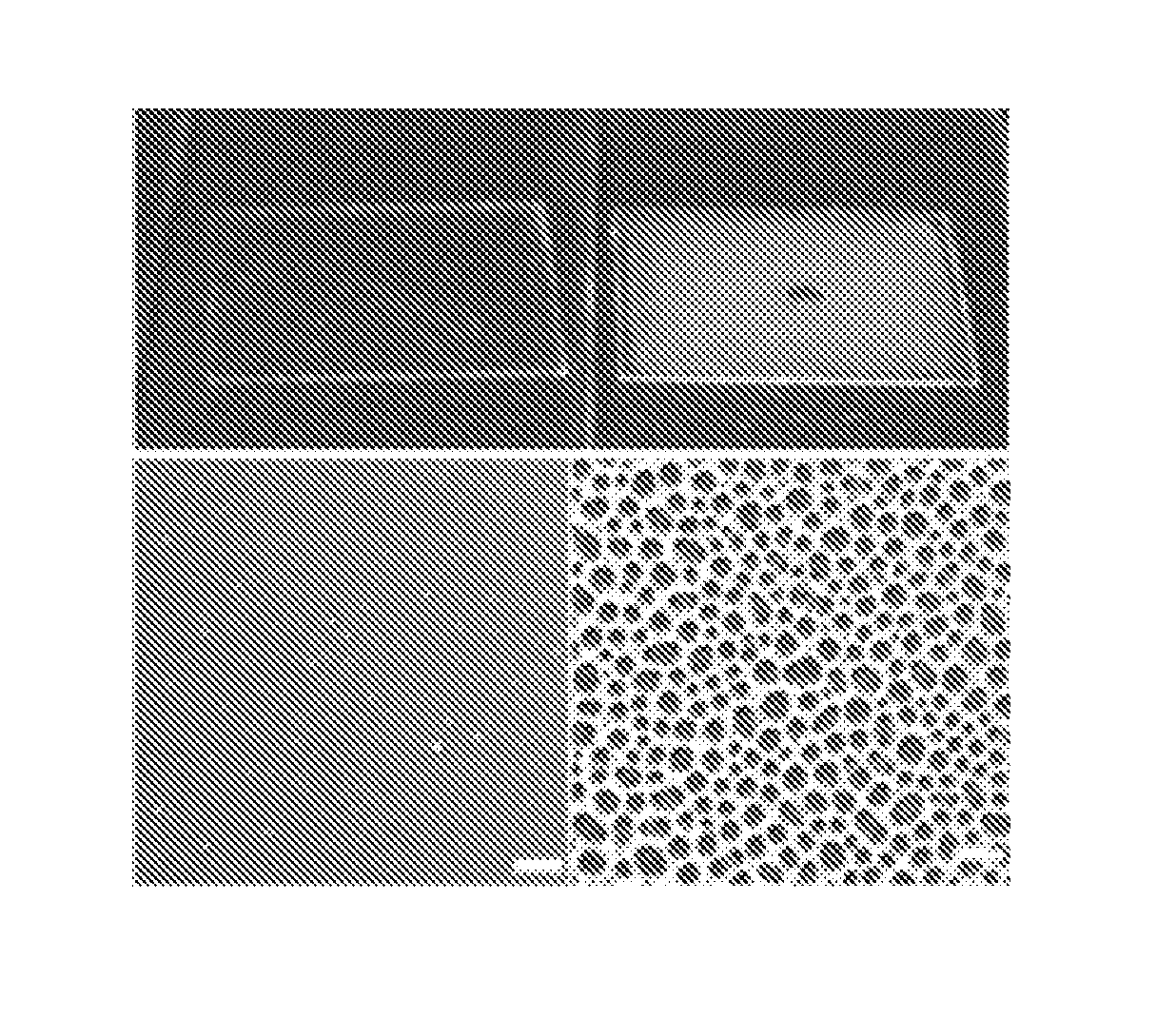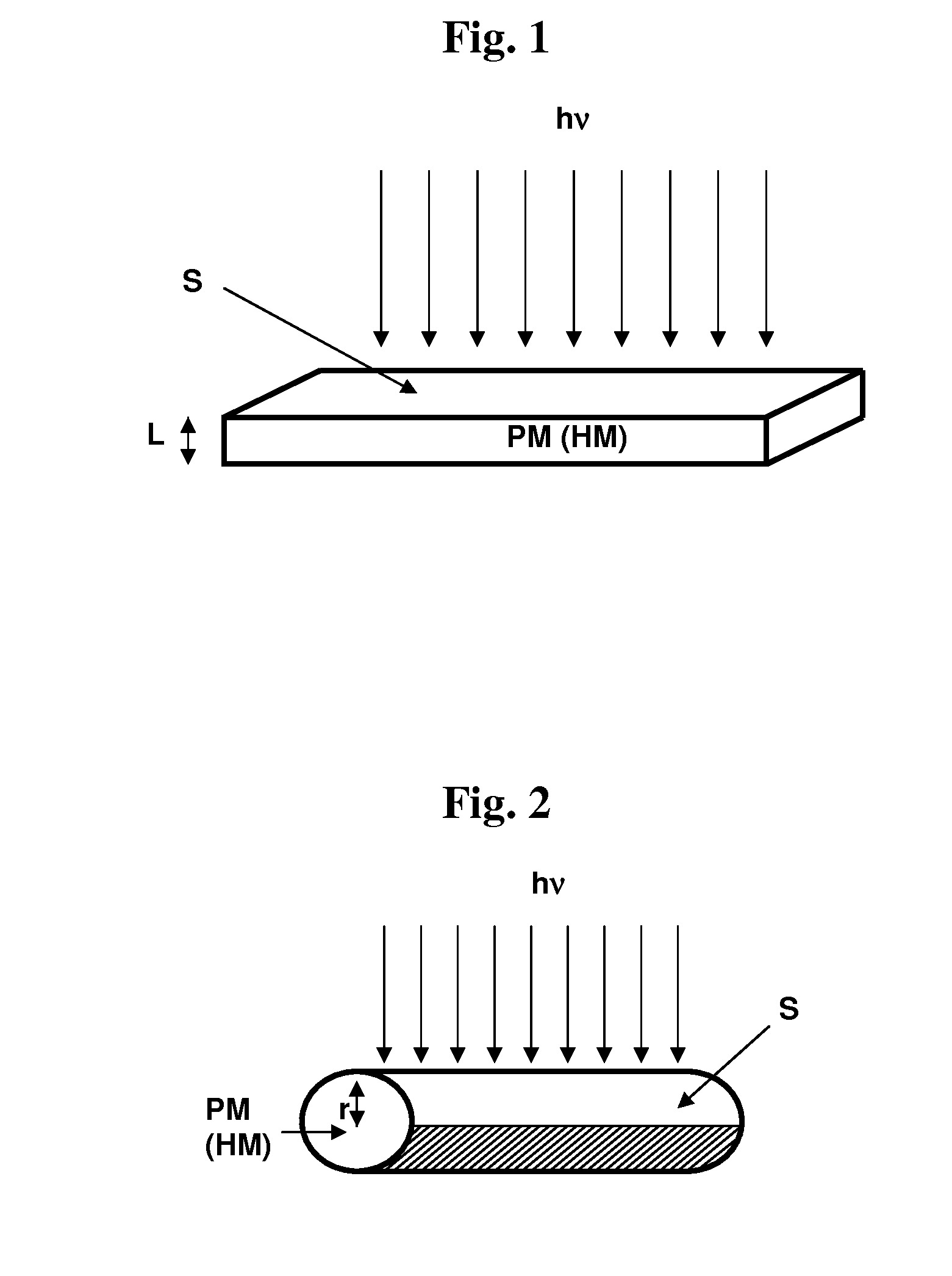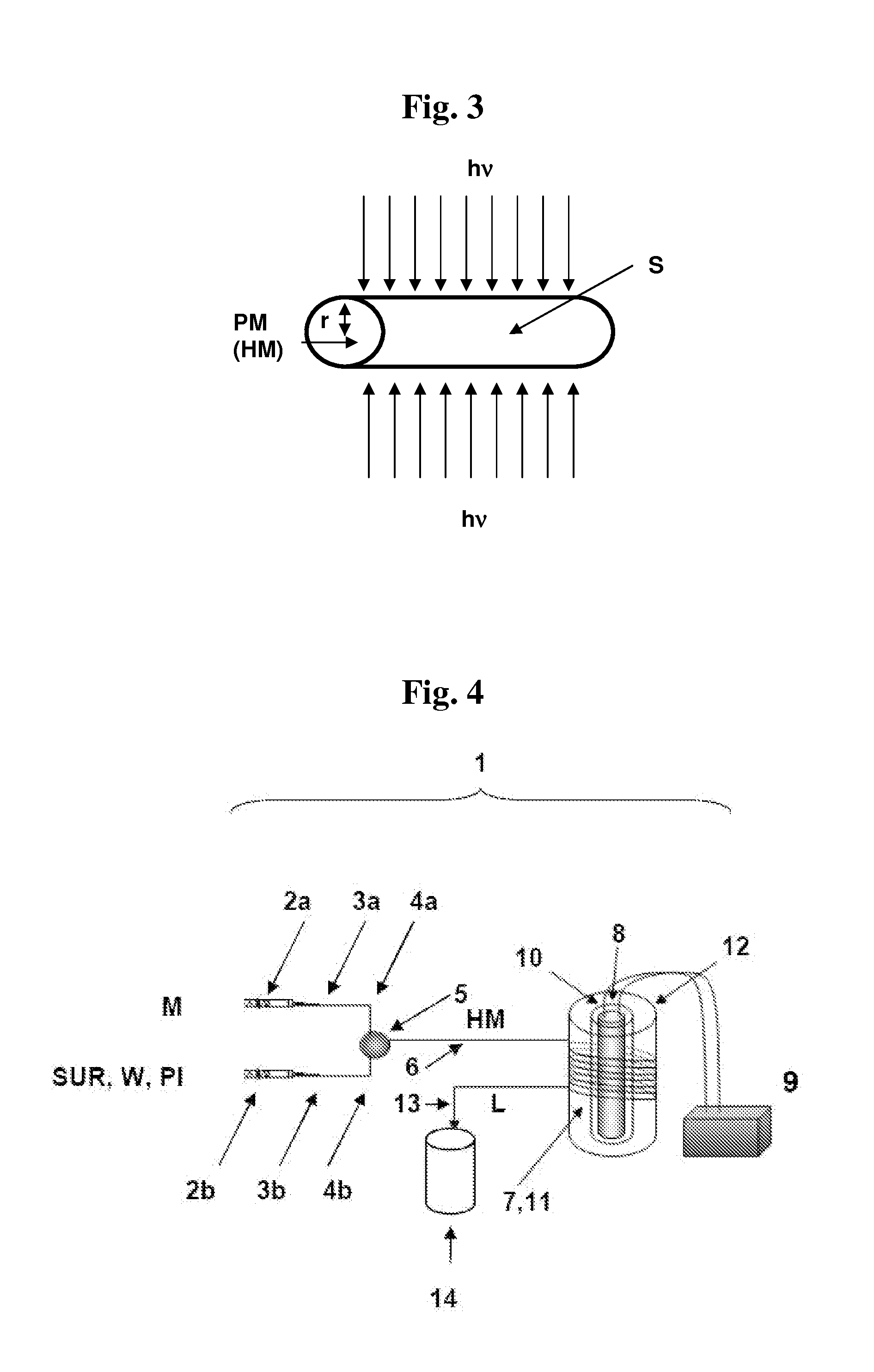Process for the modification of polymers, in particular polymer nanoparticles
a polymer nanoparticle and polymer technology, applied in the field of polymer nanoparticles, can solve the problems of high monomer conversion, requiring high monomer conversion typically requires irradiation times of more than 2 hours, etc., to achieve the effect of high amount of different compounds and low variability of end groups
- Summary
- Abstract
- Description
- Claims
- Application Information
AI Technical Summary
Benefits of technology
Problems solved by technology
Method used
Image
Examples
example 1
[0424]Photoinitiator: 2,4,6-trimethylbenzoyl-diphenylphosphineoxide (MAPO)
SDSPIIrradiation timeFlow rateDLSSolid contentYieldEx.[mg][mg][s](μl / min)[nm][%][%]130010364000611262
examples 2 to 5
[0426]Photoinitiator: 2-(bis(2,4,6-trimethylbenzoyl)phosphoryl)acetic acid sodium salt (BAPO-AA-Na)
SDSPIIrradiation timeFlow rateDLSSolid contentYieldEx.[mg][mg][s](μl / min)[nm][%][%]220010364000511579330010364000451910044001036400038201005500103640004519100
III. Modification of Polymer Nanoparticles
examples 6 and 7
[0427]The lattices obtained according to Examples 1 (to result in Example 6) and 3 (to result in Example 7) were purified by extensive dialysis, however retaining colloidal stability. The lattices were then swollen with butylmethacrylate (BMA) overnight while gently stirring only the latex phase with a magnetic stir bar. Formation of macroscopic droplets of BMA was avoided. A latex sample (2 mL) was collected carefully from the bottom of the vial with a pipette in order not to drag swelling agent. The swollen particles were placed in a 6 mL glass flask and irradiated for 2 h while the flask was gently shaken. The latex was characterized to determine the solids content, average particle size, and molecular weight distribution.
[0428]The results are illustrated in FIGS. 6 and 7.
[0429]The latex according to Example 6 (thin dashed lines) and the latex according to Example 7 in BMA emulsion (thin solid lines). The molecular weight distribution of the starting polymer is given in bold dash...
PUM
| Property | Measurement | Unit |
|---|---|---|
| wavelength | aaaaa | aaaaa |
| molecular weight distribution | aaaaa | aaaaa |
| molecular weight distribution | aaaaa | aaaaa |
Abstract
Description
Claims
Application Information
 Login to View More
Login to View More - R&D
- Intellectual Property
- Life Sciences
- Materials
- Tech Scout
- Unparalleled Data Quality
- Higher Quality Content
- 60% Fewer Hallucinations
Browse by: Latest US Patents, China's latest patents, Technical Efficacy Thesaurus, Application Domain, Technology Topic, Popular Technical Reports.
© 2025 PatSnap. All rights reserved.Legal|Privacy policy|Modern Slavery Act Transparency Statement|Sitemap|About US| Contact US: help@patsnap.com



